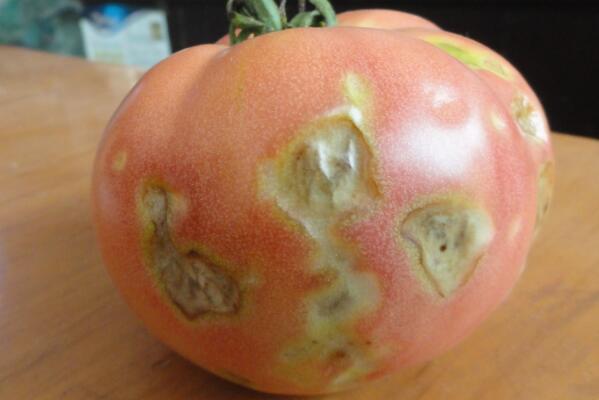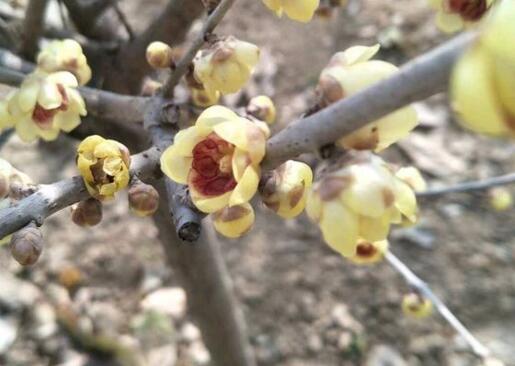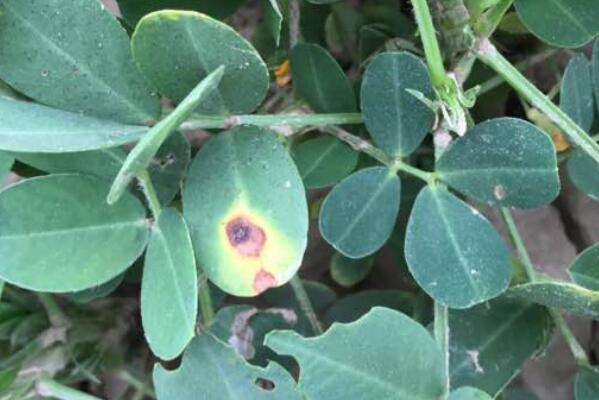Herbaceous plant tomato (tomato) what symptom does early blight, anthrax have? What kind of medicine should I take? How to prevent and cure?
Tomato (tomato) early blight and anthracnose are common diseases of tomato, which occur everywhere and are important diseases harmful to tomato. So what are the symptoms of these diseases? What kind of medicine should I take? How to prevent and cure? Let's learn more about it.

Tomato (tomato) early blight
Symptoms:
1. Tomato early blight occurs in Northeast, North China, East China, Southwest China and so on. Its main feature is that no matter the disease spot on the fruit, leaf or main stem, there are obvious wheel lines, so it is also called ring disease. The fruit disease spot is often near the fruit stalk, the stem disease spot is often at the bifurcation, and the leaf disease spot occurs on the mesophyll.
2. It mainly harms leaves, but also seedlings, stems and fruits. The seedlings are infected with a dark brown spot at the base of the stem with a slightly sunken wheel pattern. When the leaves were killed in the adult stage, most of them developed upward from the lower leaves of the plant, showing a water-immersed dark green disease spot at the beginning, a round or irregular wheel spot after expansion, a light green or yellow halo on the edge and a concentric wheel pattern in the middle. Black mildew layer (conidia and conidiophores) grows on the disease spot when wet, and leaves fall off in severe cases. The stem is infected, the disease spot is mostly in the branches and the base of the petiole, brown to dark brown irregular round or oval spot, sunken, with concentric wheel lines, sometimes cracked, sometimes causing broken branches. Green fruit infection, mostly began near the calyx, the initial oval or irregular brown or black spots, depression, late fruit cracking, the disease is hard, dense black mildew layer. Petiole, fruit stalk infected, disease spot grayish brown, long oval, slightly sunken.
Prevention and control measures:
1. Selection of varieties
Disease-resistant varieties are selected, such as Delia, Otili, Triumph 158 and so on, which can be selected in severe disease areas. In general, the disease of early-maturing varieties and narrow-leaf varieties was lighter, while that of tall, large-seedling and large-leaf varieties was more serious.
2. Pay attention to crop rotation
In view of the fact that the pathogen can have a survival period of more than one year, attention should be paid to crop rotation. It usually rotates with non-Solanaceae crops for more than two years. When choosing the nursery bed, enough attention should be paid to it.
3. Seed treatment
On the basis of paying attention to the selection of seeds from disease-free plots and disease-free plants, in addition to the prevention of other diseases, the postharvest seeds were treated with 70 ℃ dry heat for 72 hours (pay attention to a certain post-ripening transformation period after harvest). Before sowing, the seeds could be treated with 52 ℃ warm water and natural cooling for 30 minutes, and then soaked in cold water to accelerate germination.
4. Chemical control
(1) Agricultural prevention and control
(1) to cultivate strong seedlings: it is necessary to adjust the temperature and humidity of the seedling bed, divide the seedlings when the seedlings grow to two leaves, and beware of excessive growth of seedlings. It can prevent disease at seedling stage.
(2) rotation: tomato should be rotated with non-Solanaceae crops for three years.
(3) strengthening field management: it is necessary to carry out high ridge cultivation, reasonable fertilization, and close ridges in time after planting slow seedlings to promote the occurrence of new roots. The temperature and humidity in the greenhouse should be well controlled, and the management of ventilation and light transmission should be strengthened. During the fruiting period, the lower diseased leaves should be removed regularly, buried or burned, so as to reduce the chance of spreading the disease.
(2) Pesticide control
Give priority to prevention, spray every 7-10 days from the seedling stage, and colonize with medicine. The effect is remarkable.
Therapeutic medication:
1. In the early stage of the disease, diseased leaves, diseased fruits and seriously diseased branches should be removed in time, and germicidal pesticides should be sprayed. In order to prevent the occurrence of drug resistance and improve the control effect, alternate or compound use is advocated. Spray once every 7 days, 2 times continuously.
2. When the disease is serious, the central diseased plants and diseased leaves should be removed, and the prevention and treatment method of integrated traditional Chinese and western medicine should be adopted in time.
3. Strengthen the management. Apply enough rotten organic base fertilizer, reasonable close planting. When growing in the greenhouse, pay attention to ventilation and light, reduce the humidity. When cultivating in open field, pay attention to timely drainage after rain. Rotation with non-Solanaceae crops for 2-3 years. Early timely removal of diseased leaves and fruits, take out of the field and concentrated destruction. After pulling tomato seedlings, the residual plants, flowers and fruits in the field should be removed in time, combined with ploughing the land to improve field sanitation.
4. Attention should be paid to heat preservation and ventilation in the greenhouse, and ventilation must be carried out after each sprinkling in order to reduce the air humidity in the shed, especially in early spring when planting, the temperature difference between day and night is large, and the relative humidity is high, which is easy to condense and facilitate the occurrence and spread of the disease. therefore, adjusting the organic cooperation of water, fire and gas in the greenhouse is an effective means to prevent early blight.
Tomato anthracnose
Symptoms:
1. The pathogen of anthracnose infects the fruit before coloring, lurks to the disease after coloring, and then the spot gradually expands and turns black, slightly sunken, with black spots on it, and the disease will secrete red mucus under wet conditions. finally, the fruit rotted and fell off. Fruit rot and loss can also be caused in the middle and later period of growth and during the period of storage, transportation and sale after harvest.
2. Anthracnose is mainly harmful to nearly mature fruits, and any part of the fruit surface can be infected, especially in the middle waist. The infected fruit first appeared small moist faded spots, gradually expanded into near-round or amorphous spots, with a diameter of 1 to 1.5 cm, slightly sunken in the middle, dark brown in color, concentric wheel lines and black particles, and pink sticky spots in the later stage of high humidity, the disease spot often showed star-shaped cracking, and there was a halo ring of orange around the disease spot (figure 1). When it is serious, the diseased fruit can rot and fall off in the field. Many uninfected fruits can show disease one after another during the period of storage, transportation and sale after harvest, resulting in an increasing number of rotten fruits.
Prevention and treatment:
1. Strengthen the management of cultivation and disease control.
(1) do a good job in clearing the garden after harvest and destroy the sick and disabled bodies
(2) Deep soil drying, combined with soil preparation, adequate application of high-quality organic base fertilizer, high border and deep trench planting.
(3) Tomato is a crop with a long growing period, which should be carefully managed, pruning, branching and binding vines in time, weeding frequently to facilitate ventilation and humidity in the field, timely harvest during fruit ripening, improving harvest quality, and timely destruction of diseased fruit out of the field.
2. Preventive spraying can be made in the period of young fruit control.
(1) spraying 36% thiophanate methyl suspension, 50% polysulfide suspension, 50% methyl thiophanate wettable powder, 50% carbendazim wettable powder or 1000 thiophanate methyl wettable powder plus 75% chlorothalonil wettable powder at the beginning of the green fruit period, the control effect is better than that of using the above-mentioned fungicide alone.
Time: 2019-04-10 Click:
- Prev

Where does the dried plum grow? What month is the florescence? What are the effects of soaking water and drinking? How much is the seed price?
Lamei, also known as Golden Plum, Wax Flower and Yellow Plum Blossom, is not only suitable for courtyard planting, but also suitable for ancient pile bonsai and flower arrangement and plastic arts. It is an ideal precious flower for flower appreciation in winter. So, where does the immortal preserved plum grow? What month is the florescence? What are the effects of soaking water and drinking? How much is the seed price per jin?
- Next

What medicine does leguminous plant peanut seedling stage, full bloom stage, yellow leaf, cotton bollworm hit? How can we produce high yields?
Peanuts (bilobs) generally refer to peanuts (legumes) annual herbs. The pods are swollen and thick, and the flowering and fruiting period is from June to August. So what kind of medicine does it play at seedling stage, full flowering stage, yellow leaves and cotton bollworm? How can we produce high yields? What kind of medicine are used in peanut seedling stage, full flowering stage, yellow leaf and cotton bollworm?
Related
- Fuxing push coffee new agricultural production and marketing class: lack of small-scale processing plants
- Jujube rice field leisure farm deep ploughing Yilan for five years to create a space for organic food and play
- Nongyu Farm-A trial of organic papaya for brave women with advanced technology
- Four points for attention in the prevention and control of diseases and insect pests of edible fungi
- How to add nutrient solution to Edible Fungi
- Is there any good way to control edible fungus mites?
- Open Inoculation Technology of Edible Fungi
- Is there any clever way to use fertilizer for edible fungus in winter?
- What agents are used to kill the pathogens of edible fungi in the mushroom shed?
- Rapid drying of Edible Fungi

